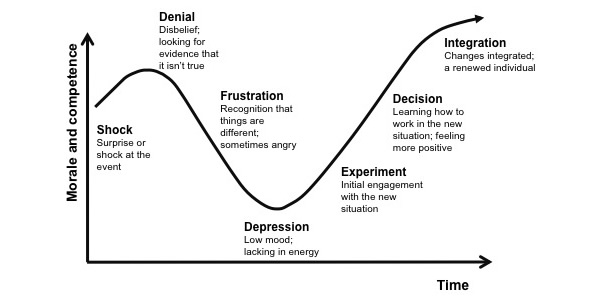IMPROVEMENT IS ALL ABOUT PEOPLE
Not all changes lead to improvement, but all improvement requires change
We know that it is vital to have people on board with the changes we want to make, but sometimes we assume that it is enough to be really clear about the end goal and to communicate and support them throughout a change.
That’s a good start, but there’s much more to it.
For example, changing behaviours requires both process changes and culture changes. (You can read more about this in a blog here)
We also need to understand what motivates people to change and why people resist change, in order to be able to improve our chances of success.
Why do we resist change?
 It can be tempting to see resistance to change as an obstacle and to find ways to work around it. But it is important to understand why people might naturally be resistant to change, and to address the people factors from the outset.
It can be tempting to see resistance to change as an obstacle and to find ways to work around it. But it is important to understand why people might naturally be resistant to change, and to address the people factors from the outset.
Don’t assume that resistance to change is necessarily about opposition to the end goal – it may just as easily be about the process of getting there.
Resistance to change is actually very normal. Some reasons for it stem from how are brains are hardwired (the neuronal reasons); some stem from our psychological needs; some stem from our sociological needs; and some reasons are just that we might not like the practical effect a change might have on us.
Be sure to think about each of these factors on your QI journey. By acknowledging them, listening for them and observing carefully throughout – we can help to reduce the impact of these on the change we are trying to make.
NEUROLOGICAL needs
The need for CERTAINTY – “I don’t know what to expect.”
Our brains respond to information and react to lack of information as a threat.
The need for CEREBRATION – “I haven’t had chance to think about it.”
When presented with surprising or shocking information, our natural fight-or-flight instinct will narrow our focus onto that information to the exclusion of other things, producing an emotional response
The need for ROUTINE – “This is how we’ve always done things.”
We’re creatures of habit and we take comfort from operating in a routine, energy-efficient way.
TIPS to meet these needs:
1. Don’t wait to present people with a finished plan that will surprise them
2. Communicate clearly and often about the change to create certainty
3. Take time to understand the day to day routines of the people involved in the change
4. Help people to adapt their routines incrementally
PSYCHOLOGICAL needs
The need for SELF-ESTEEM – “Am I good enough?”
Our successes in the past play a significant role in our sense of self-esteem and when we talk to individuals about change, this can sometimes seem to undermine their past performance.
The need for CONFIDENCE – “I don’t want to fail.”
Individuals naturally need to feel sure that they are able to achieve future success and will appear reticent if uncertain that they will be successful
The need for CONTROL – “Do I have a choice?”
We need to be able to decide our own actions, and the greater our levels of autonomy, the greater our levels of motivation.
TIPS to meet these needs:
1. As you’re suggesting change, take care to recognise work that has been done in the past
2. Describe what is different now that means that the improvement is necessary
3. Talk about what support will be available for the change
4. Work with individuals to define the “how” and their individual objectives within this
SOCIAL needs
The need for MEANINGFUL RELATIONSHIPS – “What will other people think?”
We have a fundamental need to be connected to other people, and to belong and our actions are often influenced by a drive to be accepted or respected by the people around us.
TIPS to meet these needs:
1. Work with the people involved to understand their relationships
2. Consider involving a wider group of stakeholders to include those people
3. Set aside time for people involved to maintain and build relationships that will support the QI activity
4. Be a connector – think about where you can connect individuals who will work well together and support one another
PHYSICAL needs
The need for SECURITY AND COMFORT – “What does this mean for me?”
Sometimes change might present a practical risk (real or perceived) to an individual – will their job be secure? will their working pattern change?
TIPS to meet these needs:
1. Be open and honest about potential consequences of change
2. If there are negative consequences, you might want to see them through quickly rather than letting them drag out
3. Look out for unseen sacrifices that individuals have made, currently make or are likely to make, and recognise or reward them
The Change Curve
Change is a journey. In most cases, it will look something like this.
The more effectively the people aspects of change are managed, the smoother and shorter the curve will be!


